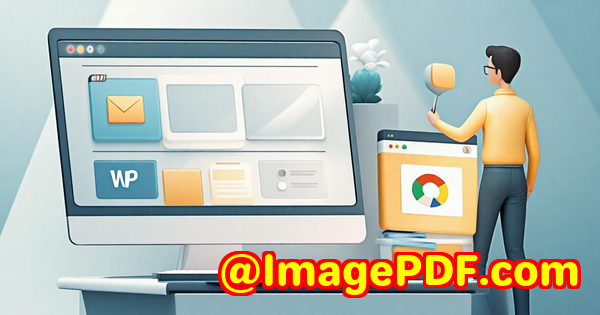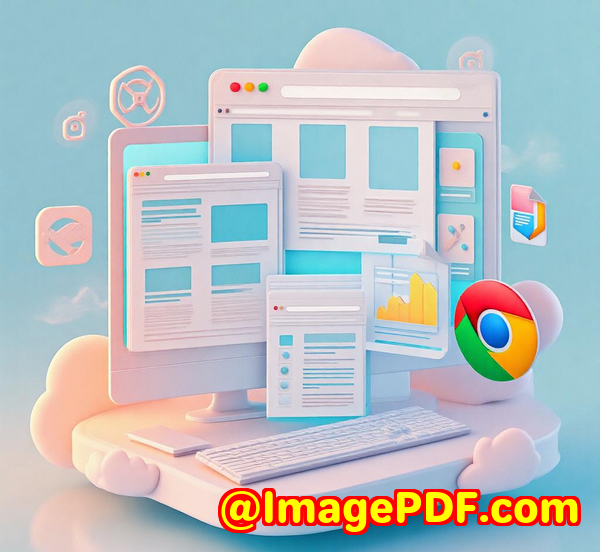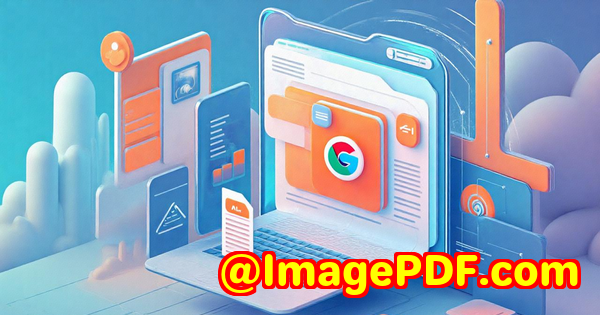JavaScript Barcode Recognition for Immigration Document Tracking Systems
JavaScript Barcode Recognition for Immigration Document Tracking Systems: How I Streamlined Processing with VeryUtils
Every week, I faced the daunting task of managing stacks of immigration documentsvisas, permits, and IDsall tagged with barcodes. Sorting them manually, verifying details, and tracking statuses felt like chasing ghosts. The scanner at our office often failed, especially with worn or poorly printed codes, and integrating barcode scanning into our web tools was a nightmare. If you've ever juggled immigration or border control document tracking, you know exactly what I mean: slow, error-prone, and frustrating.

That's when I discovered the VeryUtils JavaScript Barcode Scanner SDK for Web and Mobile Apps. It wasn't just another barcode reader; it was a game-changer for building fast, accurate barcode scanning straight into browser-based systems no bulky apps or extra installs needed.
Here's how this SDK helped me completely overhaul our immigration document tracking process and why it might be exactly what your team needs.
What is the VeryUtils JavaScript Barcode Scanner SDK?
In simple terms, it's a lightweight JavaScript library that turns any device with a camerawhether a laptop, tablet, or phoneinto a high-speed barcode scanner, right inside a web browser.
You write just a few lines of code, and voil: your web or mobile app gains the ability to scan 1D and 2D barcodes (think QR codes, DataMatrix, PDF417) live or from images. No clunky plugins, no separate apps, and no setup hassles for users.
This tool is built for developers who want to deliver a smooth, reliable scanning experience without wrestling with complicated software or hardware requirements.
Who Should Use This?
If you work with immigration documents, border control, or government offices, this SDK is tailor-made for you. But it's not just limited to government agencies:
-
Customs and immigration officers tracking passports and permits.
-
Mobile app developers building tools for secure ID verification.
-
Logistics teams managing shipment documents with barcodes.
-
Healthcare where patient ID cards need quick scanning.
-
Businesses needing offline scanning in remote locations.
Basically, if your workflow depends on tracking and verifying barcoded documents and you want a slick, integrated solution, this SDK fits the bill.
How I Used It The Real Deal
Integrating this SDK into our immigration document tracking system was surprisingly straightforward. The moment I loaded the library, I could start scanning barcodes through the laptop's webcam or mobile phone camera all in real-time.
Here's what stood out:
-
Lightning-fast scanning: We could scan up to 20 barcodes per second with over 99% accuracy. That speed cut document processing times drastically. Instead of waiting minutes per batch, our team zipped through hundreds in no time.
-
Reliable even in tough conditions: Many immigration documents have faded or damaged barcodes. The SDK's advanced algorithms decoded barcodes that other readers simply gave up on. Even under poor lighting, scanning was consistent, thanks to its camera-enhancing features.
-
User-friendly feedback: The SDK offers visual guides, audio cues, and haptic feedback, which was a lifesaver for our frontline staff. They immediately knew when a scan succeeded or if they needed to try again.
-
Offline mode: This was a critical feature for remote border checkpoints with patchy internet. Thanks to Progressive Web App (PWA) support, our system worked seamlessly offline, syncing data once connectivity was restored.
-
Multiple barcode formats: Immigration docs use various barcode typesfrom linear codes like Code 39 to 2D codes like PDF417 and QR. The SDK handled them all effortlessly, eliminating the need for separate scanners.
Why This Beats Other Tools Hands Down
Before using VeryUtils, we tried a handful of barcode readers and even hardware scanners.
-
Other software tools were slow and often required users to install extra apps or browser plugins.
-
Hardware scanners were costly and not flexible enough for mobile or web integration.
-
Many tools struggled with damaged or complex barcodes, resulting in repeated scans and errors.
VeryUtils' SDK was different because it:
-
Runs entirely in-browser using WebAssembly, no installs or setup.
-
Supports batch scanning, capturing multiple barcodes quickly.
-
Ensures top-tier security for sensitive immigration data.
-
Provides continuous updates and supportnot a one-and-done product.
-
Allows easy deployment on both public websites and private networks.
This blend of speed, accuracy, and ease of use simply made our immigration tracking workflow smoother and more reliable.
A Closer Look at Core Features That Made a Difference
1. Real-time Video Stream Scanning
Instead of snapping static images, the SDK scans barcodes directly from a live camera feed. This means:
-
No need for users to pause and capture photos.
-
Instant detection and decoding as they move the document.
-
Much faster throughput with less user frustration.
2. Wide Barcode Symbology Support
From Code 39, Code 128, and UPC for linear barcodes to QR Code, Data Matrix, PDF417, Aztec for 2D codes, the SDK supports them all. That flexibility was key because immigration documents often combine different barcode types.
3. Offline Capability
Working in remote immigration checkpoints or mobile inspection units means unreliable or no internet connection. The SDK's offline support let our staff scan and store data locally, syncing back once connected. No interruptions, no data loss.
4. User Guidance & Feedback
Visual overlays helped align documents, while audio and vibration feedback signaled successful scans, speeding up user confidence and reducing errors.
My Bottom Line
If you handle immigration document tracking or anything that demands fast, accurate barcode recognition within a web or mobile app, this JavaScript Barcode Scanner SDK from VeryUtils is a no-brainer.
It solved the major headaches I facedslow scanning, unreliable reads, complicated setupsand freed my team to focus on what matters, not on fiddling with clunky hardware or software.
I'd recommend this SDK to anyone building immigration, government, or document verification systems. It's lightweight, lightning-fast, and designed to work anywhere, anytime.
Try it yourself and see how much easier your barcode scanning can be.
Click here to try it out for yourself: https://veryutils.com/javascript-barcode-scanner-sdk
Start your free trial now and boost your productivity.
Custom Development Services by VeryUtils
Beyond off-the-shelf tools, VeryUtils offers custom development services tailored to your specific needs.
Whether you need:
-
PDF processing tools on Linux, macOS, or Windows
-
Custom Windows Virtual Printer Drivers generating PDFs or images
-
Monitoring and intercepting printer jobs in various formats like PCL or Postscript
-
Barcode recognition, OCR, layout analysis for complex scanned documents
-
Cloud solutions for digital signatures, document conversion, or DRM protection
-
Tailored integration of barcode scanning and processing in your apps
VeryUtils can develop it with expertise in Python, PHP, C/C++, JavaScript, .NET, and more.
If you have a unique project, just reach out through their support centre: http://support.verypdf.com/ they're ready to help.
FAQs
Q: Can the VeryUtils JavaScript Barcode Scanner SDK scan damaged or faded barcodes?
A: Yes, it uses advanced decoding algorithms and camera-enhancing features to reliably scan barcodes even if they are partially damaged or printed poorly.
Q: Does this SDK require users to install any software?
A: No. The SDK runs entirely in the web browser via WebAssembly, so no installations or plugins are needed.
Q: Can the SDK scan multiple barcodes at once?
A: Absolutely. It supports batch scanning up to 20 barcodes per second, making it great for high-volume document processing.
Q: Is the SDK usable offline?
A: Yes, with Progressive Web App support, users can scan barcodes without internet connectivity, syncing data later.
Q: What barcode types does it support?
A: It supports a wide range, including Code 39, Code 128, QR Codes, PDF417, DataMatrix, Aztec, and many postal codes, covering nearly every use case.
Tags/Keywords
-
JavaScript barcode scanner SDK
-
Immigration document barcode tracking
-
Web barcode scanning
-
Offline barcode scanner
-
Real-time barcode recognition
-
Barcode scanning for immigration
-
JavaScript QR code scanner
If you're ready to upgrade your immigration document processing with fast, accurate barcode recognition that works anywhere, VeryUtils' JavaScript Barcode Scanner SDK is your go-to solution. No fuss, no delays just solid performance you can trust.



